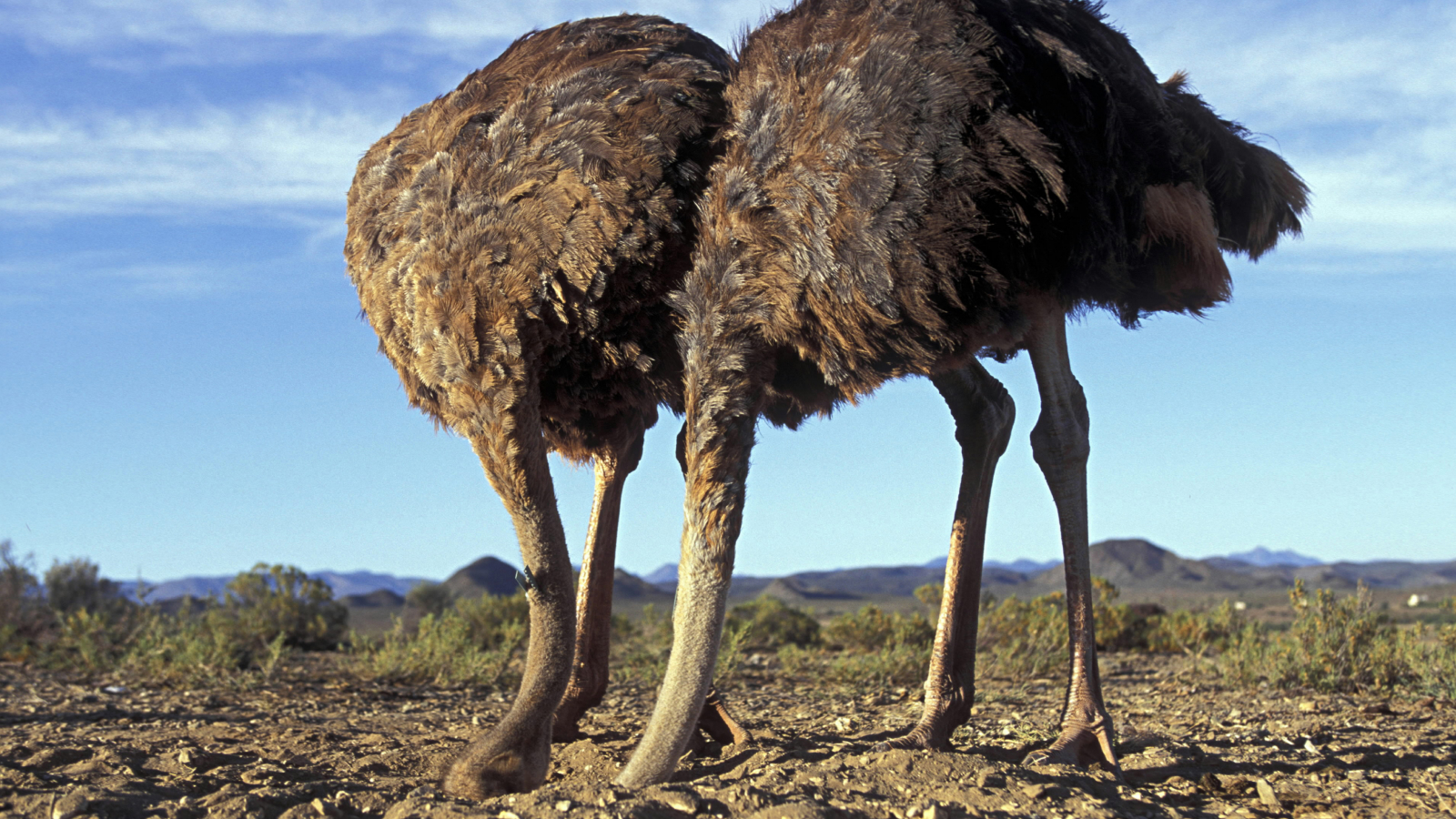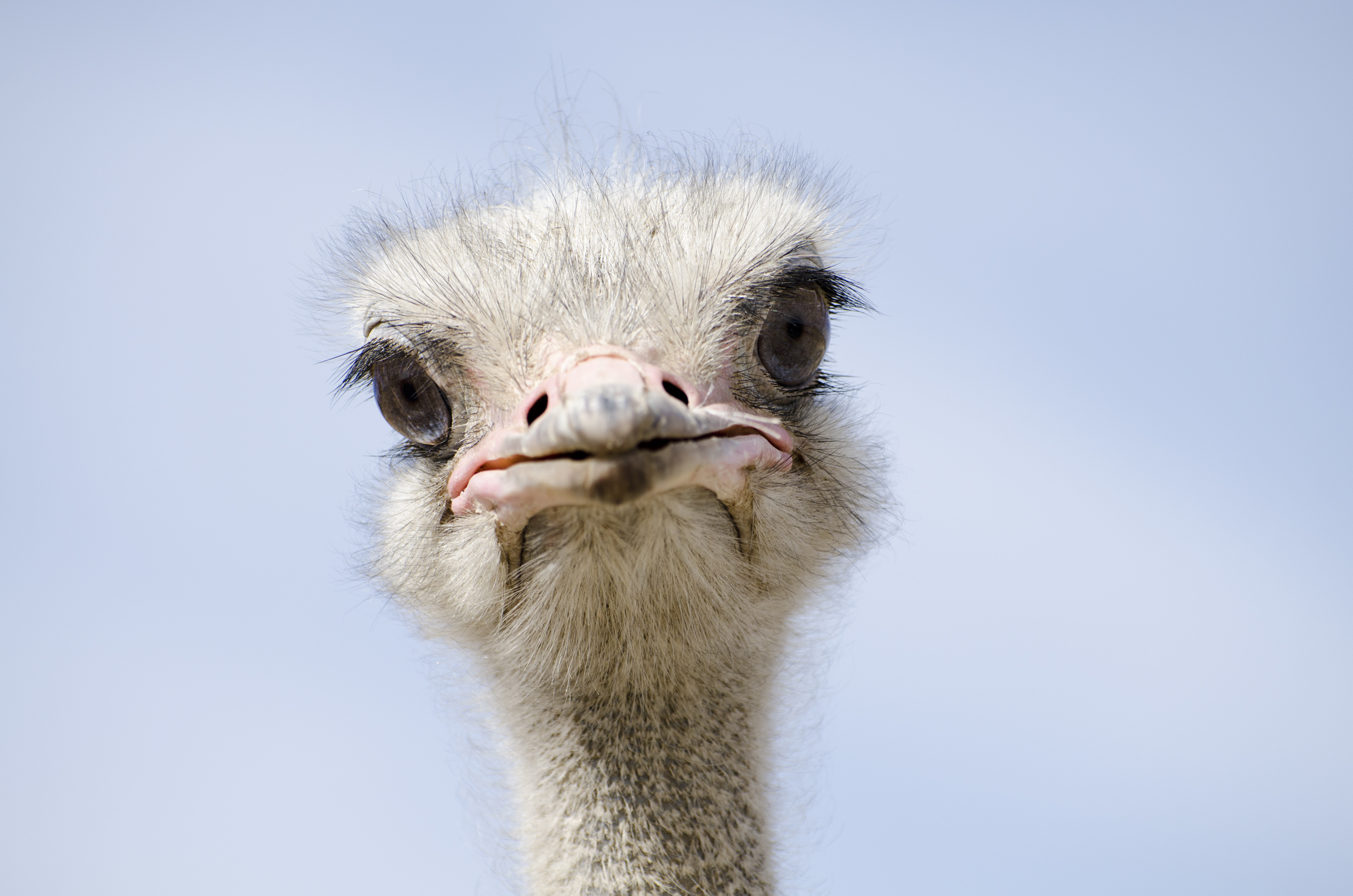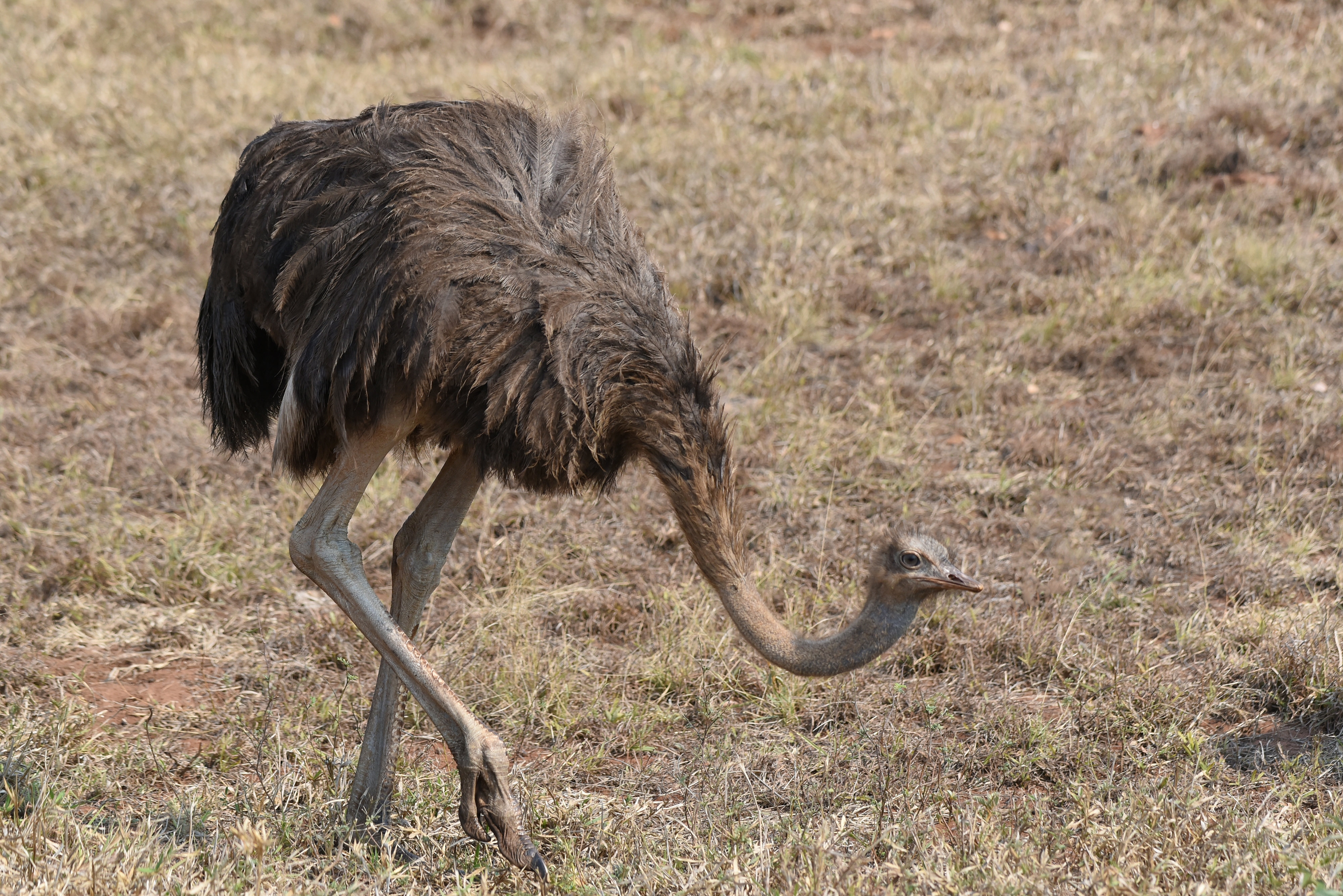
For centuries, people have claimed that, when faced with danger, ostriches (Struthio species) stick their heads in the sand to hide. This vivid image led to the popular phrase "bury your head in the sand" to describe when someone refuses to face their problems head-on.
This belief about ostriches may have been created by the Roman naturalist Pliny the Elder, also known as Gaius Plinius Secundus, who completed one of the earliest collections of encyclopedias, according to ABC science. In Book 10 of "The Natural History," he describes an ostrich hiding its head in the bushes to appear invisible.
"They have the marvellous property of being able to digest every substance without distinction, but their stupidity is no less remarkable; for although the rest of their body is so large, they imagine, when they have thrust their head and neck into a bush, that the whole of the body is concealed," he wrote, according to one translation of the text.
But do ostriches really bury their heads? No, they do not, but they sometimes look like they are.

Ostriches are found in Africa and live in a variety of habitats, including grasslands, savannas and deserts. They are the world's largest birds, weighing up to 287 pounds (130 kilograms), and they can grow up to 9 feet (2.7 meters) tall, according to San Diego Zoo. However, their heads are relatively small, and they do have a few behaviors that, from a distance, may look like they are burying their heads.
Related: 12 of the biggest birds on Earth
Unlike nest-building birds, ostriches dig shallow holes in the sand or dirt to lay their eggs. Both parents rotate the eggs several times a day to ensure they are kept warm. This behavior may, from afar, look like they have their heads buried.

Ostriches also spend most of their time with their heads close to the ground as they look for food, including grasses and, occasionally, small animals, such as mice, frogs and insects.

They are the fastest-running birds in the world, with a maximum speed of 43 mph (70 km/h) according to Smithsonian's National Zoo. In the wild, ostriches have many natural predators — including cheetahs, lions and leopards — and if they're in danger, ostriches often run away.
If they cannot escape, they sometimes lie extremely flat on the ground, with their necks extended, to blend in with the terrain. Some reports suggest that adult ostriches use their wings to disturb the dust underneath them, creating a cloud to distract nearby predators away from their chicks. They can even deliver a kick strong enough to kill a lion.
So, in reality, ostriches rely on their speed and keen senses to detect and escape predators; they have no need to bury their heads.







